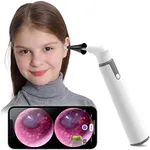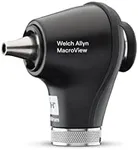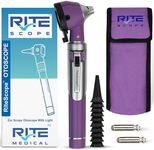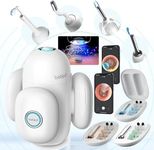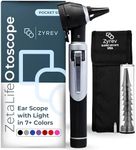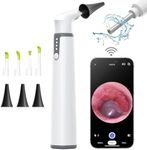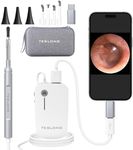Buying Guide for the Best Otoscopes
Choosing the right otoscope is essential for healthcare professionals and even for home use to ensure accurate ear examinations. An otoscope is a medical device used to look into the ears, and it helps in diagnosing ear infections, blockages, and other ear-related issues. When selecting an otoscope, it's important to consider several key specifications to ensure it meets your needs and provides reliable performance.MagnificationMagnification refers to how much the otoscope can enlarge the view of the ear canal and eardrum. This is important because a higher magnification allows for a more detailed examination, which can help in identifying issues more accurately. Otoscopes typically offer magnification levels ranging from 2x to 5x. For general use, a magnification of around 3x is usually sufficient. However, if you need to see finer details, such as in a clinical setting, you might prefer an otoscope with higher magnification.
Light SourceThe light source in an otoscope illuminates the ear canal, making it easier to see inside. This is crucial for a clear and accurate examination. Otoscopes can have different types of light sources, such as halogen, LED, or fiber optic. LED lights are popular because they are bright, energy-efficient, and have a long lifespan. Halogen lights are also bright but may consume more power. Fiber optic lights provide even illumination without shadows. For most users, an LED light source is a good choice due to its brightness and efficiency.
PortabilityPortability refers to how easy it is to carry and use the otoscope in different locations. This is important for healthcare professionals who need to move between different examination rooms or for home users who want a convenient device. Portable otoscopes are typically lightweight and may come with a carrying case. Some models are pocket-sized, making them easy to carry around. If you need an otoscope for on-the-go use, look for a compact and lightweight model.
Power SourceThe power source of an otoscope determines how it is powered. This is important because it affects the convenience and reliability of the device. Otoscopes can be powered by batteries (rechargeable or disposable) or by being plugged into an electrical outlet. Battery-powered otoscopes offer more mobility and are ideal for portable use, while plug-in models ensure a constant power supply. If you need an otoscope for frequent use in different locations, a battery-powered model might be more suitable.
Specula SizeSpecula are the cone-shaped attachments that are inserted into the ear canal. The size of the specula is important because it needs to fit comfortably into the ear without causing discomfort. Otoscopes usually come with a range of specula sizes to accommodate different ear canal sizes, from infants to adults. When choosing an otoscope, ensure it includes a variety of specula sizes or that additional sizes are available for purchase. This will allow you to use the otoscope on patients of all ages or for different family members.
DurabilityDurability refers to how well the otoscope can withstand regular use and potential drops or impacts. This is important because a durable otoscope will last longer and provide reliable performance over time. Otoscopes made from high-quality materials, such as metal or reinforced plastic, tend to be more durable. If you plan to use the otoscope frequently or in a busy clinical setting, look for a model known for its durability and build quality.

